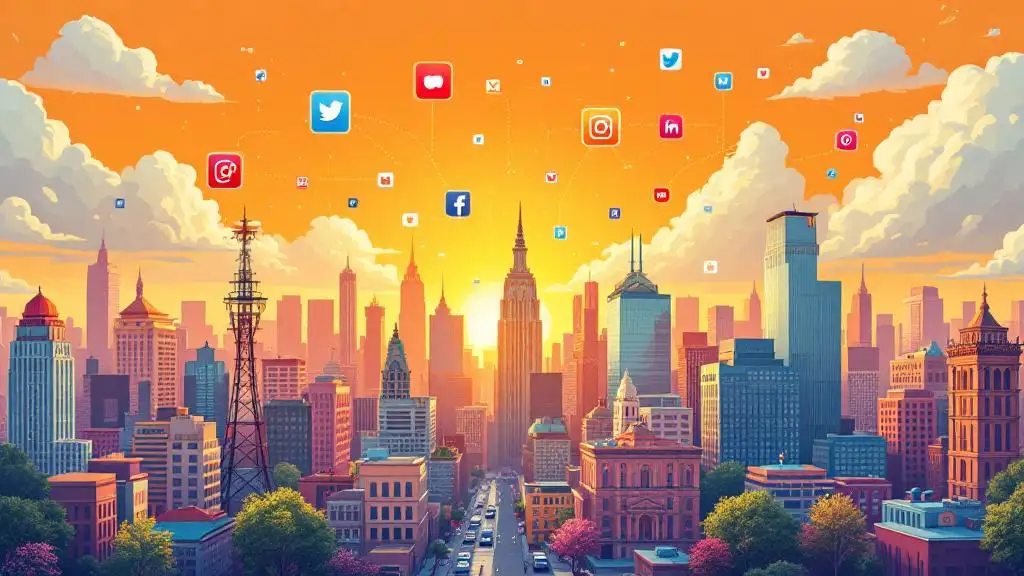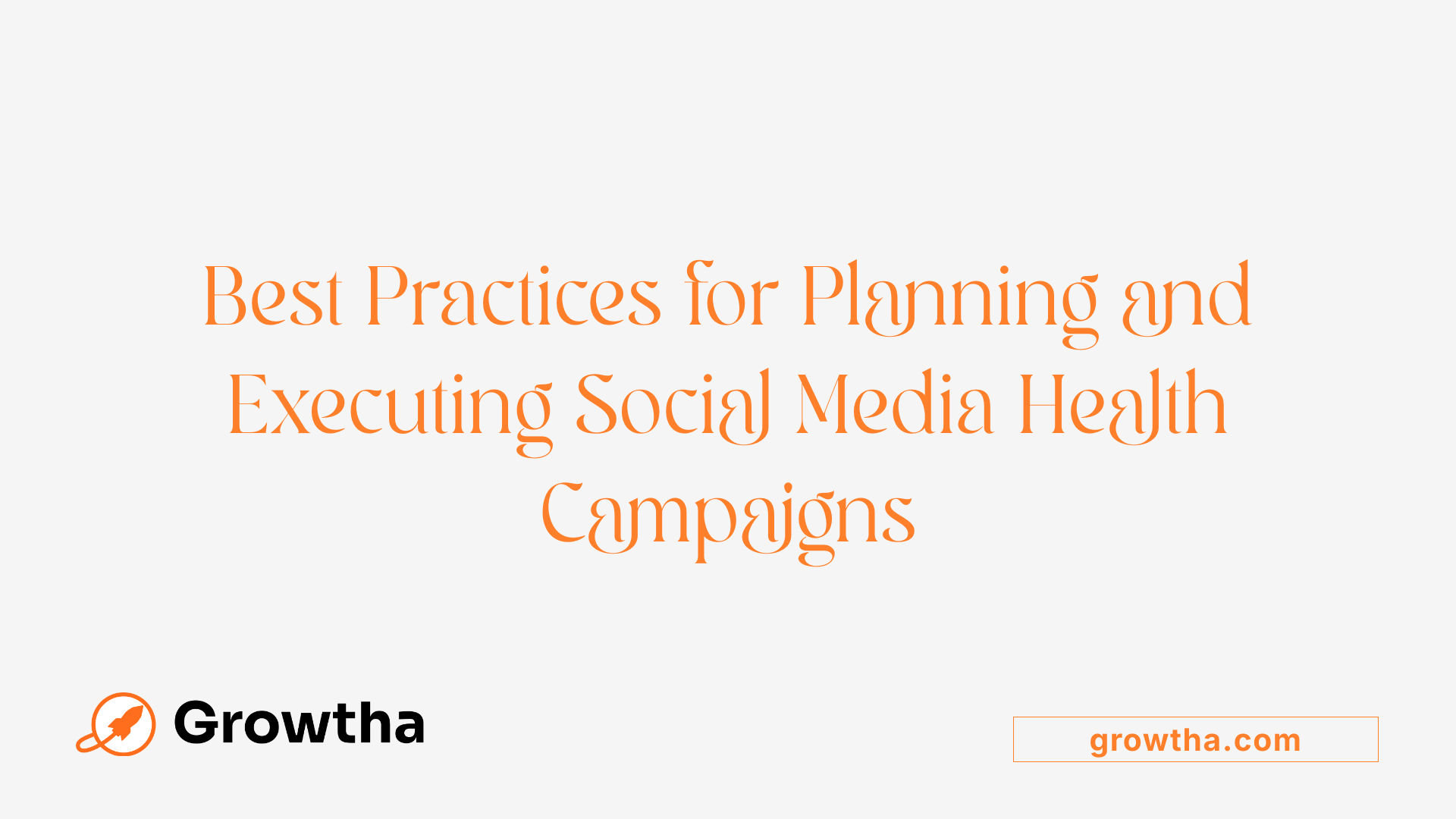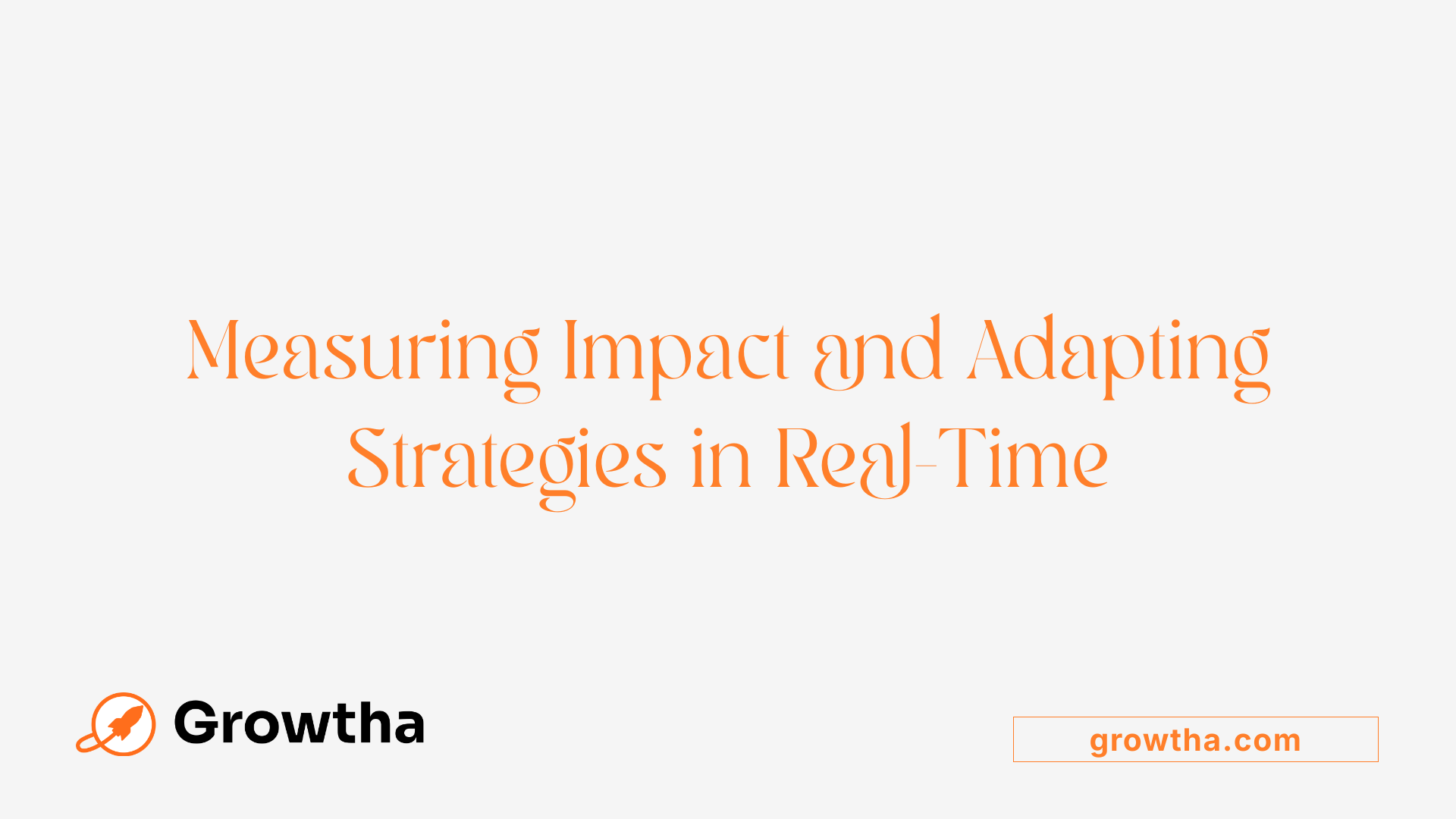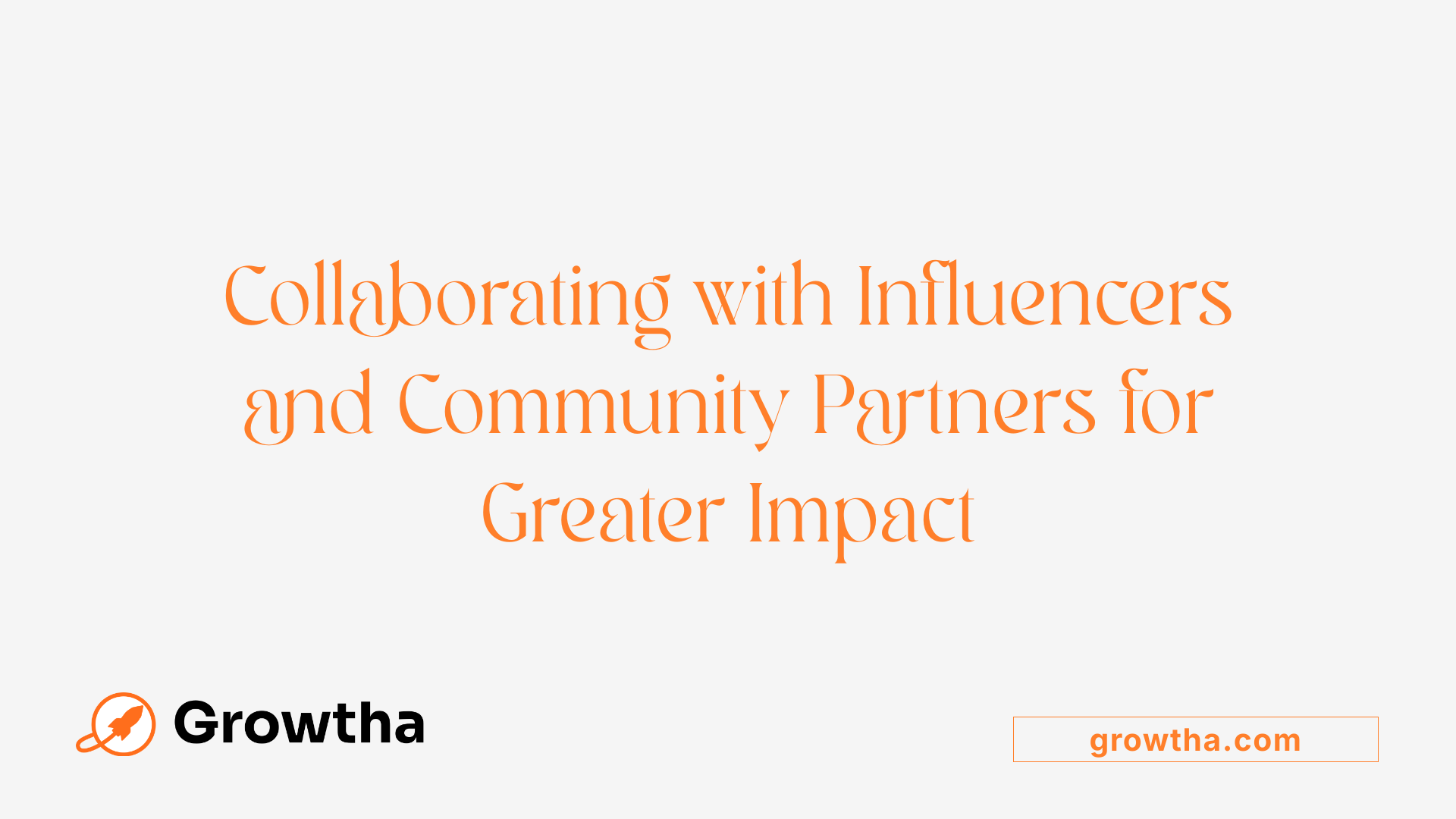How to Use Social Media Stories for Health Awareness
Harnessing the Power of Social Media Stories for Public Health


How to Use Social Media Stories for Health Awareness
Unlocking Health Promotion Through Visual and Interactive Content
Social media stories have become an indispensable part of health communication, offering dynamic, real-time, and engaging ways to disseminate health information. Platforms like Instagram, TikTok, Facebook, and Twitter provide unique features that enable health organizations, professionals, and advocates to educate, support, and mobilize communities effectively. This article explores how to strategically leverage social media stories for health awareness campaigns, emphasizing best practices, content ideas, and impact measurement to maximize public health outcomes.
Understanding the Strategic Value of Social Media in Health Promotion
How can social media be used to promote health awareness and education?
Social media serves as a versatile platform for enhancing health awareness and education. Its widespread use allows healthcare providers, organizations, and public health institutions to share crucial information quickly and broadly. For instance, during the COVID-19 pandemic, social media was instrumental in disseminating timely guidelines, debunking myths, and encouraging preventive behaviors.
Effective health promotion on social media involves delivering accessible and engaging messages through various formats like videos, infographics, and interactive posts. Campaigns such as World Heart Day utilize targeted content to raise awareness about cardiovascular health. These platforms also foster support networks, where patients and caregivers exchange experiences and advice, ultimately improving health literacy.
However, challenges such as misinformation and privacy issues require careful management. Collaborating with trusted influencers, verifying facts, and adhering to confidentiality standards are vital to maintaining credibility. Overall, social media amplifies health education, making vital information reachable, participatory, and community-driven.
What are the benefits of using social media for health promotion?
Harnessing social media for health promotion offers multiple advantages. It enables rapid and cost-effective dissemination of health messages, helping reach diverse populations instantly. During health crises, social media provides real-time updates and mobilizes communities swiftly.
Healthcare organizations can leverage these platforms to support patient education—sharing tips, success stories, and preventive strategies—thus encouraging positive behavioral changes. Social media also enhances engagement by allowing users to ask questions, receive feedback, and participate in challenges or campaigns.
Furthermore, it fosters professional networking among healthcare workers, facilitating continuous learning and collaboration. For public health authorities, social media acts as a tool for surveillance, spreading awareness, and countering misinformation systematically.
In summary, strategic social media use improves trust, community involvement, and overall health outcomes, making it an indispensable component of modern health promotion.
What are current best practices for health social media campaigns?
Successful health campaigns on social media are rooted in evidence-based strategies. These include defining clear objectives, understanding the target audience, and choosing the most effective platforms—such as Instagram for visual storytelling or TikTok for reaching younger demographics.
Content should be consistent, engaging, and tailored to specific audience needs. Incorporating multimedia elements—videos, stories, quizzes—enhances interaction and message retention. Collaborating with influencers or community leaders can increase credibility and broaden reach.
Monitoring real-time analytics allows health communicators to evaluate campaign performance and adapt tactics swiftly. Regularly checking engagement metrics like likes, comments, and shares helps identify what resonates most.
Addressing misinformation proactively through fact-checking, myth-busting, and transparent communication is essential. Employing clear disclaimers and privacy safeguards maintains trust and compliance.
Using comprehensive management tools streamlines scheduling, analysis, and content curation, saving time and ensuring consistency. Establishing partnerships, leveraging hashtags, and involving audiences in content creation foster community engagement.
Implementing these best practices ensures that health social media campaigns are influential, trustworthy, and aligned with broader health promotion goals.
Selecting the Right Platforms and Features for Health Messaging

How can social media stories be utilized effectively for health awareness campaigns?
Social media stories are powerful tools for health awareness when used strategically. They allow for quick, engaging communication that can reach audiences in real-time. Effective utilization involves leveraging multimedia formats such as videos, infographics, and personal narratives that resonate with specific target groups on platforms like Instagram, TikTok, Facebook, and LinkedIn.
Creating stories tailored to the audience's preferences enhances engagement. For example, short, energetic videos or reels on TikTok and Instagram can captivate younger users, while more detailed updates or community stories on Facebook can connect with parents and older demographics.
Real-time dissemination of accurate health information helps combat misinformation and builds trust. Features like Q&A sessions, polls, and live updates foster interactive participation. Collaborations with trusted influencers and health experts can boost credibility, making messages more trustworthy.
Compliance with privacy regulations such as HIPAA is essential, especially when sharing patient stories or health data. Marketers should obtain explicit consent and avoid sharing personally identifiable information.
Monitoring engagement metrics—such as click-through rates, responses, and shares—provides insights for refining content and strategies. Overall, combining engaging multimedia with targeted distribution and interactive features maximizes the impact of health awareness campaigns.
What are best practices for planning and implementing health campaigns using social media stories?
Successful health campaigns utilizing social media stories start with defining clear, measurable objectives aligned with overall health goals, like raising awareness on vaccination or promoting healthy lifestyles.
Understanding the target audience is crucial. Conduct research to assess their social media behaviors, preferences, and content consumption patterns. This knowledge informs the development of engaging, relevant stories that cater to their interests.
A well-structured content calendar ensures consistent posting and balanced messaging. Incorporate diverse content types—such as tutorials, patient stories, behind-the-scenes glimpses, and static infographics—to keep the audience engaged.
Utilize social listening tools and analytics to track performance indicators like reach, engagement, and audience feedback. These insights enable real-time adjustments, optimizing messaging for better reach and impact.
Integrate stories into a broader communication strategy that includes offline activities and other online channels. This coordinated approach reinforces key messages and enhances overall campaign effectiveness.
Finally, involve stakeholders—including healthcare providers, community leaders, and influencers—in content creation and dissemination to broaden reach and credibility.
By continuously monitoring and adapting strategies based on data, health organizations can ensure that their social media storytelling efforts are both impactful and sustainable.
Content Creation and Engagement Strategies
How can social media stories be utilized effectively for health awareness campaigns?
Social media stories serve as dynamic tools for health awareness campaigns by providing real-time, engaging content tailored to specific audiences. Leveraging platforms like Instagram, TikTok, Facebook, and LinkedIn, organizations can use stories to share vivid videos, infographics, and personal narratives that resonate with viewers.
These stories allow health messages to be delivered quickly and visually, capturing attention through short-form content that can include animations, quick tips, or patient testimonials. Interactive features such as Q&A sessions, polls, stickers, and live updates enhance engagement, enabling audiences to participate actively.
Tailoring content based on demographic preferences—using Reels or TikTok clips for younger audiences and detailed posts or group discussions on Facebook for parents or older demographics—maximizes relevance.
Ensuring content accuracy and privacy compliance, especially when sharing personal stories, is crucial. Collaborating with reputable influencers and health experts increases credibility and trustworthiness.
Monitoring performance metrics such as engagement rates, view counts, and click-throughs helps refine future campaigns for greater public health impact. Overall, social media stories are versatile channels to disseminate trustworthy health information rapidly and foster ongoing community interaction.
What types of content can increase engagement and awareness?
To boost engagement and public awareness, health organizations should incorporate a variety of compelling content forms. Educational videos and infographics simplify complex health topics, making them more accessible and shareable.
Personal stories and testimonials from patients or community members add authenticity and emotional appeal, fostering trust. Lighthearted, humorous, or trending content can also grab attention and make health messages memorable.
Using trending hashtags like #mentalhealthawareness or #wellnesswednesday increases visibility within broader social media conversations.
User-generated content—such as followers sharing their health journeys—further enhances authenticity. Interactive features, including polls, quizzes, and live Q&A sessions, actively involve audiences, encouraging participation and reinforcing learning.
Supplementing these strategies with collaborations with influencers and health advocates amplifies message reach and credibility. Collectively, these content types create vibrant, engaging campaigns that educate, motivate, and inspire healthier behaviors among diverse populations.
This integrated approach to content creation ensures health campaigns are not only informative but also engaging, foster community involvement, and effectively promote public health goals.
Monitoring, Analytics, and Adaptation in Campaigns

How can the impact of health awareness campaigns using social media stories be measured?
Measuring the success of health awareness campaigns that leverage social media stories requires a mix of quantitative metrics and qualitative insights. Initially, platforms’ built-in analytics tools—such as Hootsuite, Sprout Social, and Canva—offer valuable data on engagement levels, including likes, shares, comments, impressions, and reach.
Beyond basic metrics, tracking click-through rates (CTR), view durations, and story replies provides deeper insight into audience interaction and content relevance. For example, a rise in link clicks can indicate increased interest or intent to act, such as seeking further health information.
Evaluating behavioral outcomes is crucial. Long-term success might be reflected in increased health service utilization, higher participation in health screenings, or improved health attitudes measured through follow-up surveys and behavioral data.
To comprehensively assess impact, organizations should integrate real-time analytics with feedback mechanisms like surveys or polls embedded within stories. These tools help capture audience perceptions and self-reported behavioral intentions.
Applying behavioral change theories, such as the Social Cognitive Theory (SCT) and the Transtheoretical Model (TTM), can aid in understanding how engagement influences actual health behaviors. Combining these approaches results in a multi-dimensional evaluation, linking immediate engagement to tangible health outcomes.
Overall, success measurement involves establishing clear benchmarks beforehand, continuously monitoring data analytics, and adjusting strategies accordingly, ensuring that campaigns remain both effective and adaptable.
Using social media analytics tools—Hootsuite, Sprout Social, Canva
To manage and interpret social media data effectively, healthcare organizations should harness tools like Hootsuite, Sprout Social, and Canva. Hootsuite and Sprout Social provide dashboards for scheduling posts, monitoring engagement, and analyzing audience interactions across multiple platforms.
Canva, besides its content creation capabilities, offers integrated analytics that show content performance, enabling quick visual assessments. These tools facilitate examining trending content, peak engagement times, and demographic information, helping tailor future messaging.
By leveraging these analytics platforms, health campaigns can identify which messages resonate most, optimize posting schedules, and allocate resources efficiently.
Adjusting strategies based on real-time data
Real-time analytics allow for rapid strategy shifts. If certain content types, such as infographics or testimonial videos, garner more engagement, health communicators can prioritize creating similar content.
Monitoring engagement trends helps detect emerging concerns or misinformation, enabling prompt responses—such as myth-busting or clarifications—keeping the audience accurately informed.
Moreover, practitioners can use live feedback from story interactions to fine-tune messaging tone, language, and outreach methods, maximizing relevance and impact.
Evaluating overall campaign impact and health outcomes
While engagement metrics are vital, assessing the broader health impact requires analyzing whether awareness leads to behavioral change. This can include tracking increased help-seeking behaviors, improved knowledge levels, or participation in health programs.
Follow-up surveys, health data from clinics, and community feedback are instrumental in measuring long-term outcomes. Comparing pre- and post-campaign data facilitates understanding of real-world effects.
Additionally, evaluating policy changes or community-level health improvements provides macro-level insight into strategic effectiveness.
Successful campaigns integrate ongoing analytics with such measures, creating a feedback loop. This dynamic approach ensures continuous improvement and alignment with public health goals.
| Tool / Method | Purpose | Typical Metrics / Outcomes | Additional Details |
|---|---|---|---|
| Hootsuite / Sprout Social | Scheduling, monitoring, analysis | Engagement rates, peak times, audience demographics | Multi-platform management for streamlined reporting |
| Canva | Content creation and performance analytics | Visual content performance, user interaction metrics | Easy-to-use templates with built-in analytics |
| Real-Time Analytics | Immediate insights for strategy adjustment | Engagement spikes, misinformation alerts, audience responses | Enables rapid response and content moderation |
| Follow-up Surveys | Behavioral and attitudinal assessment | Self-reported behavior changes, health literacy improvements | Guides long-term evaluation and program refinement |
| Long-term Outcome Data | Impact on actual health behaviors | Healthcare service utilization, screening participation | Links awareness campaigns to tangible health benefits |
Combining these tools and approaches ensures a comprehensive evaluation system. This integration enhances the ability to adapt campaigns effectively, ultimately fostering sustained improvements in public health outcomes.
The Role of Influencers and Community Engagement

How do partnering with trusted influencers and health advocates enhance health campaigns?
Collaborating with reputable influencers and health advocates boosts the authenticity and reach of health campaigns. Influencers, especially those with a dedicated following, can craft engaging content that personalizes health messages, making them more relatable. When influencers share personal stories or demonstrate health behaviors, they foster trust and motivate their audiences to take action.
Community partners such as schools, local health departments, and non-profit organizations help extend campaigns into diverse communities. These collaborations lend credibility and facilitate grassroots engagement, ensuring that messages resonate across different demographic groups and cultural contexts.
How can encouraging user-generated content and community stories improve trust and involvement?
User-generated content (UGC) and authentic community stories serve as powerful tools for building trust. When real individuals share their health journeys, successes, or struggles, it humanizes health issues and fosters a sense of community.
Encouraging community members to share their stories on social media creates a sense of ownership and engagement. It also provides relatable examples that inspire others to adopt healthier behaviors.
How can building trust and authenticity be supported through sharing real stories?
Sharing real stories from patients and community members establishes transparency and credibility. These narratives, often conveyed through videos, posts, or live sessions, showcase genuine experiences and reinforce the effectiveness of health interventions.
Authentic stories are more likely to sway public opinion, dispel myths, and motivate behavior change. They also foster emotional connections, making audiences more receptive to health messages.
How do collaborations with community organizations and schools enhance health outreach?
Partnering with community organizations and educational institutions amplifies the reach and impact of health campaigns. Schools serve as effective venues for youth-focused health promotion, while community groups help target underserved populations.
These collaborations enable the dissemination of tailored health messages and facilitate offline activities such as health fairs, workshops, and challenges.
They also support the development of culturally sensitive content that respects local norms and values, leading to greater acceptance and engagement.
| Strategy | Description | Benefits |
|---|---|---|
| Partnering with influencers | Collaborate with trusted social media personalities and advocacy figures | Increases credibility and reach, fosters relatability |
| Encouraging community stories | Invite community members to share health experiences | Builds trust, promotes peer support |
| Using authentic narratives | Share real patient and community testimonies | Enhances emotional engagement, dispels misinformation |
| Collaborating with schools and local groups | Work with educational and community organizations | Reaches diverse audiences, supports offline initiatives |
Types of content used in these strategies
| Content Type | Purpose | Example |
|---|---|---|
| Personal stories | Humanize health issues, motivate others | Video testimonial from a patient |
| User posts and testimonials | Foster engagement and authenticity | Community health success stories |
| Influencer videos | Reach targeted demographics | TikTok dance with health promotion message |
| Community event coverage | Demonstrate active outreach | Photos from health fairs and school programs |
| Educational and motivational content | Raise awareness and educate | Infographics on disease prevention |
By leveraging the influence of trusted figures and authentic community voices, health campaigns can foster stronger connections, improve message credibility, and encourage healthier behaviors across diverse populations.
Addressing Privacy, Compliance, and Ethical Considerations

Ensuring HIPAA compliance and patient privacy
Healthcare organizations must prioritize patient privacy when utilizing social media. This involves strict adherence to the Health Insurance Portability and Accountability Act (HIPAA), which sets standards for protecting Protected Health Information (PHI). Professionals should avoid disclosing any identifiable health details without explicit consent, as violations can lead to legal penalties and loss of trust.
Implementing privacy safeguards includes training staff on confidentiality policies, using secure platforms for sharing sensitive content, and establishing clear protocols for online engagement. Regular monitoring ensures that privacy standards are maintained across all social media channels.
Obtaining explicit consent for personal stories
Sharing patient success stories or personal health experiences requires explicit, written consent from the individual involved. Healthcare providers should clearly inform patients about how their stories will be used online, including potential audience reach and the permanency of social media posts. This transparency ensures ethical standards are upheld and respects patient autonomy.
Consent forms should specify the scope of sharing and provide options for withdrawal, fostering trust and compliance.
Avoiding sharing Protected Health Information (PHI)
To prevent privacy breaches, health organizations and staff must refrain from sharing any Protected Health Information online. This includes names, dates, medical records, or any identifiers that could link content back to a specific patient.
Monitoring content before posting, and promoting a culture of privacy vigilance, help minimize inadvertent disclosures. When discussing health topics, focus on aggregate data or anonymized examples that do not compromise individual privacy.
Maintaining professionalism and ethical standards
Professionalism in social media involves respectful communication, accurate information sharing, and cultural sensitivity. Healthcare providers should avoid posting unprofessional comments, entertainment content unrelated to health, or engaging in disputes online.
Establishing and enforcing a code of conduct for social media use helps maintain ethical standards. Posts should be evidence-based, cite reputable sources, and avoid sensationalism, which can harm credibility and mislead the public.
Implementing security measures and regular audits
Integrating security measures such as secure login protocols, two-factor authentication, and routine security audits attests to a healthcare organization’s commitment to maintaining confidentiality.
Periodic reviews of social media accounts help identify vulnerabilities or potential violations. Regular staff training on emerging privacy threats and updates on legal requirements ensures ongoing compliance.
Risks associated with social media use in healthcare
The potential risks include the spread of misinformation, privacy breaches, unprofessional conduct, and miscommunication. Misinformation can lead to poor health decisions, while breaches of PHI compromise patient confidentiality and may incur legal penalties.
Unprofessional online behavior can damage healthcare professionals' reputations and lead to disciplinary actions. Misinformation, especially AI-generated content, can also undermine public trust and safety.
How can health organizations ensure ethical use of social media?
Organizations can foster ethical use by developing clear guidelines that emphasize confidentiality, professionalism, and evidence-based communication. Obtaining explicit consent for sharing personal stories, and training staff on ethical standards, reinforces responsible behavior.
Regular oversight and content review, along with audits, help maintain accountability. Promoting transparency and authenticity in messaging builds trust and upholds credibility, vital for effective health communication.
In conclusion, while social media offers many opportunities for health promotion, careful attention to privacy, ethical standards, and professionalism is essential. By adopting comprehensive policies and training, healthcare organizations can leverage social media’s benefits while safeguarding patient rights and maintaining public trust.
Future Trends and Emerging Technologies in Social Media for Health
How will AI-driven content creation and chatbots shape health promotion?
Artificial intelligence (AI) is revolutionizing social media in healthcare by enabling more personalized and efficient communication. AI-driven content creation tools can generate tailored health messages, visual content, and educational materials based on audience preferences and behaviors.
Chatbots are becoming a staple in healthcare social media strategies. These virtual assistants can provide instant responses to health queries, guide users through symptom checking, and direct them to appropriate services. They help in maintaining 24/7 engagement, reduce the workload on healthcare providers, and ensure that users receive accurate information.
AI algorithms also analyze vast amounts of social media data to detect emerging health concerns and misinformation trends. This insight allows health organizations to proactively address misinformation, deliver timely updates, and refine their messaging.
What role does live streaming of health events and webinars play?
Live streaming offers real-time interaction, making health education more accessible and engaging. Organizations like the CDC and health clinics frequently use platforms like Facebook Live, Instagram Live, and YouTube Live to broadcast webinars, Q&A sessions, and health awareness events.
This format encourages direct engagement, allowing viewers to ask questions and receive immediate feedback from health professionals. Live streams also foster a sense of community among viewers, strengthening trust and ongoing health dialogue.
How are gamified health challenges and virtual communities transforming engagement?
Gamification introduces elements like points, badges, and leaderboards to motivate healthy behaviors through social media. Virtual communities centered around wellness challenges—such as step counts, hydration goals, or healthy eating—help users build accountability and support.
These challenges capitalize on social sharing, peer encouragement, and friendly competition, which can significantly enhance motivation. Platforms can host these challenges within their apps or through connected social media campaigns, making participation fun and social.
What technological advances are being driven by augmented reality (AR) and virtual reality (VR)?n
Augmented reality and virtual reality bring immersive experiences that can enhance health education and behavioral interventions. AR apps can overlay health tips, reminders, and tutorials onto the physical environment, making learning interactive.
VR environments allow users to simulate medical procedures, experience virtual clinics, or practice health behaviors in a controlled setting. For example, VR can help reduce anxiety before medical procedures or teach proper hygiene practices in engaging ways.
How are partnerships with healthcare influencers and tech companies creating new opportunities?
Collaborating with trusted health influencers and major technology firms amplifies reach and credibility. Influencers with a focus on health, fitness, mental wellness, and disease awareness can engage diverse audiences on platforms like TikTok, Instagram, and YouTube.
Partnerships with tech companies, including social media platforms and AI firms, facilitate the development of innovative tools such as predictive analytics, AI chatbots, and AR/VR solutions tailored for health promotion.
These collaborations also help ensure content accuracy, improve technological capabilities, and extend the impact of public health campaigns.
| Technology/Trend | Application | Benefits | Example Platforms |
|---|---|---|---|
| AI Content & Chatbots | Personalized messaging and instant response | Increased engagement, accurate info delivery, scalability | Facebook Messenger, WhatsApp, custom apps |
| Live Streaming | Real-time health education and engagement | Immediate interaction, community building | Facebook Live, YouTube, Instagram |
| Gamification | Health challenges & social competitions | Motivation, community support, behavior change | App-based challenges, Instagram, TikTok |
| AR & VR | Interactive health tutorials and simulations | Enhanced learning, anxiety reduction | Oculus VR, ARKit, Snapchat |
| Influencer & Tech Partner | Drive reach and credibility | Broadened audience, innovative content | TikTok, Instagram, TikTok influencers |
As social media continues to evolve, integrating these emerging technologies offers significant potential to boost health promotion efforts, improve patient engagement, and foster healthier communities worldwide.
Leveraging Social Media for Building Community and Fostering Trust
Creating online support groups and communities
Social media has transformed how patients and healthcare providers connect beyond clinical settings. Platforms like Facebook groups, Instagram communities, and specialized forums offer safe spaces for people to share experiences, seek advice, and receive emotional support. For example, 80% of cancer patients use social media to connect with peers, highlighting the importance of peer support in managing health conditions.
These online communities foster a sense of belonging and collective resilience. They also facilitate the sharing of practical advice and personal stories, which can motivate others and reduce feelings of isolation. Healthcare organizations often create closed groups or moderated forums to ensure safe and accurate information exchange.
Shared stories and collective health goals
Storytelling is a powerful tool for health promotion. Sharing personal health journeys, recovery stories, and success moments can inspire others and reinforce health behaviors. Campaigns that involve stories about overcoming illness or adopting healthier habits resonate deeply, especially when tailored to specific cultural or demographic groups.
Collective health goals, such as increasing vaccination rates or promoting healthy lifestyles, are often advanced through social media challenges and hashtag campaigns. For instance, challenges like "Water Drinking Week" or "Step Count Goals" encourage community participation and accountability.
Building trust through transparency and responsiveness
Trust is fundamental in health communication. Social media platforms allow healthcare providers to demonstrate transparency by providing real-time updates, addressing community concerns, and openly sharing initiatives and setbacks.
Prompt responsiveness to comments and questions shows engagement and respect for community needs. Healthcare organizations like Mayo Clinic and Cleveland Clinic excel by hosting live Q&A sessions and interactive webinars, which foster direct communication and clarify misconceptions.
Documenting healthcare staff stories and community successes
Highlighting the human side of healthcare through staff stories builds empathy and trust. Sharing behind-the-scenes looks at healthcare workers’ shifts, their experiences, and their dedication can humanize institutions and make care more approachable.
Moreover, celebrating community successes—such as increased screening participation, successful health campaigns, or patient milestones—can motivate others to participate. Posts that showcase real progress demonstrate that collective efforts yield tangible results.
| Strategy | Description | Examples |
|---|---|---|
| Support Groups and Communities | Creating safe spaces for peer support and shared experiences | Facebook health groups, moderated forums |
| Collective Goals | Promoting health challenges and shared objectives via hashtag campaigns | #HealthyCommunity, #StopTheStigma |
| Transparency and Responsiveness | Engaging openly and addressing concerns quickly | Live Q&A sessions, comment interactions |
| Staff and Community Highlights | Showcasing healthcare workers and community achievements | Behind-the-scenes stories, patient success stories |
Social media in healthcare emphasizes community-building by facilitating peer support, storytelling, transparency, and celebrating milestones. These strategies foster trust and collective effort, leading to more engaged and health-conscious communities. Leveraging visual storytelling, real-time interactions, and targeted campaigns creates a dynamic environment where health promotion becomes a shared mission.
Effective Strategies for Lasting Impact in Health Promotion
Utilizing social media stories for health awareness is a multifaceted approach that combines strategic planning, engaging content, real-time interaction, and continuous evaluation. The power of visual storytelling and interactive features can bridge gaps in health literacy, promote positive behaviors, and sustain community engagement. Healthcare professionals and organizations must stay informed about emerging technologies, adhere to ethical standards, and collaborate with community influencers to create credible, relatable, and impactful health campaigns. With thoughtful execution and persistent monitoring, social media stories can significantly enhance public health outcomes, making health promotion accessible, engaging, and trustworthy for diverse populations.
References
- Social Media Use for Health Purposes: Systematic Review - PMC
- Using Social Media Effectively for Public Health Outreach
- Ways to Positively Use Social Media - Discovery Mood & Anxiety
- An Expert's Guide to Healthcare Marketing on Social Media - Big Sea
- How to Use Social Media in Healthcare - Pri-Med
- Healthcare Social Media Marketing: Importance, Tips & Strategies
- Health Promotion Through Social Media - Medicat
- Social Media to Promote Health | Action for Healthy Kids







